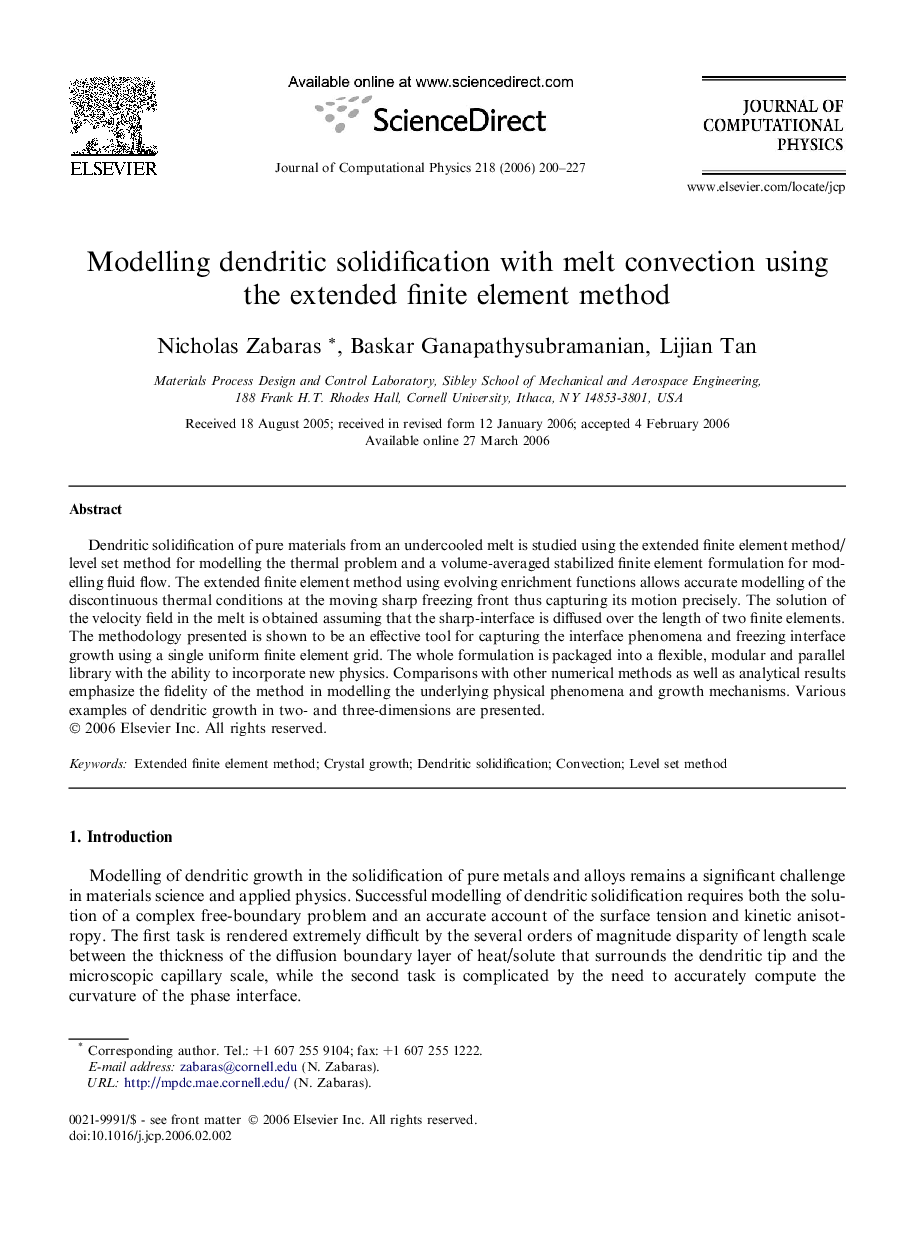| Article ID | Journal | Published Year | Pages | File Type |
|---|---|---|---|---|
| 522417 | Journal of Computational Physics | 2006 | 28 Pages |
Dendritic solidification of pure materials from an undercooled melt is studied using the extended finite element method/level set method for modelling the thermal problem and a volume-averaged stabilized finite element formulation for modelling fluid flow. The extended finite element method using evolving enrichment functions allows accurate modelling of the discontinuous thermal conditions at the moving sharp freezing front thus capturing its motion precisely. The solution of the velocity field in the melt is obtained assuming that the sharp-interface is diffused over the length of two finite elements. The methodology presented is shown to be an effective tool for capturing the interface phenomena and freezing interface growth using a single uniform finite element grid. The whole formulation is packaged into a flexible, modular and parallel library with the ability to incorporate new physics. Comparisons with other numerical methods as well as analytical results emphasize the fidelity of the method in modelling the underlying physical phenomena and growth mechanisms. Various examples of dendritic growth in two- and three-dimensions are presented.
